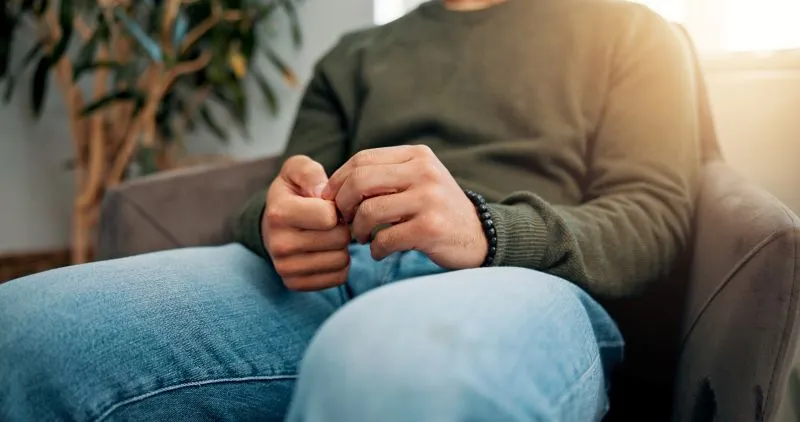Social situations that others handle with ease can feel like climbing Mount Everest when you live with social anxiety. The racing heart before a presentation, the sweaty palms during small talk, or the overwhelming urge to flee from group conversations are more than just nerves—they’re signs of a condition that affects millions of people worldwide.
Social anxiety disorder goes beyond typical shyness or occasional nervousness. It creates genuine barriers to personal and professional growth, relationships, and overall quality of life. The good news? With the proper understanding and treatment approach, these barriers can be overcome. This article explores the various paths to managing social anxiety and treatment options available, helping you identify which strategies might work best for your unique situation.
Understanding Social Anxiety
Now that we’ve defined social anxiety, let’s explore the common symptoms that may signal its presence.
What is Social Anxiety?

Social anxiety disorder, also known as social phobia, is a mental health condition characterized by intense fear or anxiety in social situations. Unlike general nervousness before public speaking or meeting new people, social anxiety involves persistent worry about being judged, embarrassed, or rejected by others. This fear often seems disproportionate to the actual threat posed by the social situation.
People with social anxiety typically worry that others will notice their anxiety symptoms and judge them negatively. This creates a cycle where the fear of appearing anxious actually increases anxiety levels, making social situations even more challenging to handle.
Common Symptoms of Social Anxiety
The symptoms of social anxiety manifest in three main categories, each affecting daily functioning in different ways:
Physical Symptoms:
- Rapid heartbeat or palpitations
- Sweating or hot flashes
- Trembling or shaking
- Muscle tension
- Nausea or stomach discomfort
- Dizziness or lightheadedness
- Difficulty breathing
Emotional Symptoms:
- Intense fear of judgment or criticism
- Overwhelming self-consciousness
- Fear of embarrassment or humiliation
- Persistent worry about upcoming social events
- Low self-esteem in social contexts
- Fear of offending others
Behavioral Symptoms:
- Avoiding social situations entirely
- Staying quiet in group settings
- Difficulty making eye contact
- Speaking very softly or hesitantly
- Leaving social events early
- Relying on alcohol or substances to cope
- Excessive preparation for social interactions
The Impact of Untreated Social Anxiety
When left unaddressed, social anxiety can significantly limit life opportunities. Career advancement may suffer due to difficulty with networking, presentations, or team collaboration. Personal relationships might remain superficial because deeper connections require vulnerability and openness. Academic performance can decline when participation grades matter or group projects are required.
The isolation that often accompanies social anxiety can lead to depression, substance abuse, or other mental health challenges. This is why understanding effective social anxiety and treatment approaches becomes crucial for long-term well-being.
Treatment Options for Social Anxiety

With various treatment options available, it’s essential to consider which methods might be most effective for your situation.
Therapy and Counseling
Professional therapy remains one of the most effective approaches for managing social anxiety, and treatment typically begins with establishing a therapeutic relationship where individuals feel safe to explore their fears.
Cognitive Behavioral Therapy (CBT)
CBT stands as the gold standard for treating social anxiety. This therapeutic approach focuses on identifying and changing negative thought patterns that fuel social fears. Through CBT, individuals learn to recognize distorted thinking, such as assuming everyone is judging them harshly or believing they must be perfect in social situations.
The therapy process involves homework assignments, thought records, and behavioral experiments that gradually challenge anxious thoughts. CBT for social anxiety and treatment typically spans 12-16 sessions, though some people benefit from longer-term work. The skills learned in CBT provide lasting tools for managing anxiety independently.
Exposure Therapy
Exposure therapy involves gradually facing feared social situations in a controlled, supportive manner. Rather than avoiding anxiety-provoking scenarios, individuals work with their therapist to create a hierarchy of feared situations, starting with less threatening ones and progressively moving toward more challenging interactions.
For individuals undergoing treatment for social anxiety and blushing, exposure exercises might begin with imagining social situations, then progress to brief interactions with strangers, and eventually involve giving presentations or attending social events. The key is moving at a pace that feels manageable while still promoting growth.
Medication Options
While therapy addresses the root causes of social anxiety, medication can provide symptom relief that makes therapeutic work more accessible. Several types of medications show effectiveness for social anxiety, and treatment plans often combine medication with therapy for optimal results.
Antidepressants (SSRIs/SNRIs)
Selective serotonin reuptake inhibitors (SSRIs) and serotonin-norepinephrine reuptake inhibitors (SNRIs) are commonly prescribed for social anxiety. These medications work by adjusting brain chemistry to reduce overall anxiety levels. Standard options include sertraline, paroxetine, venlafaxine, and escitalopram.
These medications typically take 4-6 weeks to show full effectiveness and may cause initial side effects that usually diminish over time. Working closely with a psychiatrist or primary care physician ensures proper dosing and monitoring throughout treatment.
Beta-Blockers
Beta-blockers like propranolol can be particularly helpful for treatment for social anxiety and blushing, as they block the physical symptoms of anxiety such as rapid heartbeat, trembling, and sweating. These medications are often used on an as-needed basis before specific anxiety-provoking events like presentations or job interviews.
Unlike antidepressants, beta-blockers work immediately and don’t require daily use. However, they only address physical symptoms rather than the underlying anxiety, making them most effective when combined with other treatment approaches.
Self-Help Strategies
While professional treatment provides the strongest foundation for recovery, self-help strategies can enhance formal treatment or provide initial relief for those not yet ready for professional support. Developing a comprehensive social anxiety treatment plan often includes these personal management techniques.

Mindfulness and Relaxation Techniques
Mindfulness practices help individuals stay present during social situations rather than getting lost in anxious thoughts about judgment or embarrassment. Regular meditation, progressive muscle relaxation, and breathing exercises can reduce baseline anxiety levels and provide in-the-moment coping tools.
Deep breathing techniques are beneficial for the treatment of social anxiety and blushing, as they help regulate the nervous system and reduce visible anxiety symptoms. Practicing these techniques regularly makes them more accessible during stressful social moments.
Journaling and Self-Reflection
Writing about social experiences, anxious thoughts, and personal progress provides valuable insights into anxiety patterns. Journaling can help identify specific triggers, track improvement over time, and process complex social interactions constructively.
A social anxiety treatment plan might include daily mood tracking, thought-challenging exercises, or reflection on successful social interactions. This self-awareness builds confidence and helps individuals recognize their growth, even when progress feels slow.
Moving Forward with Confidence
Social anxiety and treatment success stories remind us that recovery is possible with patience, persistence, and the right support system. While the process requires effort and sometimes feels uncomfortable, the rewards of increased social connection and reduced anxiety are worth the investment.
Professional help remains invaluable for most people dealing with social anxiety. Therapists, counselors, and medical professionals can provide personalized guidance, monitor progress, and adjust treatment approaches as needed. Don’t hesitate to reach out for support—seeking help demonstrates strength and self-awareness, not weakness.
The path to managing social anxiety looks different for everyone, but with commitment to a thoughtful treatment plan, meaningful improvement is within reach. Take that first step, whether it’s scheduling a therapy appointment, trying a relaxation technique, or simply acknowledging that change is possible.